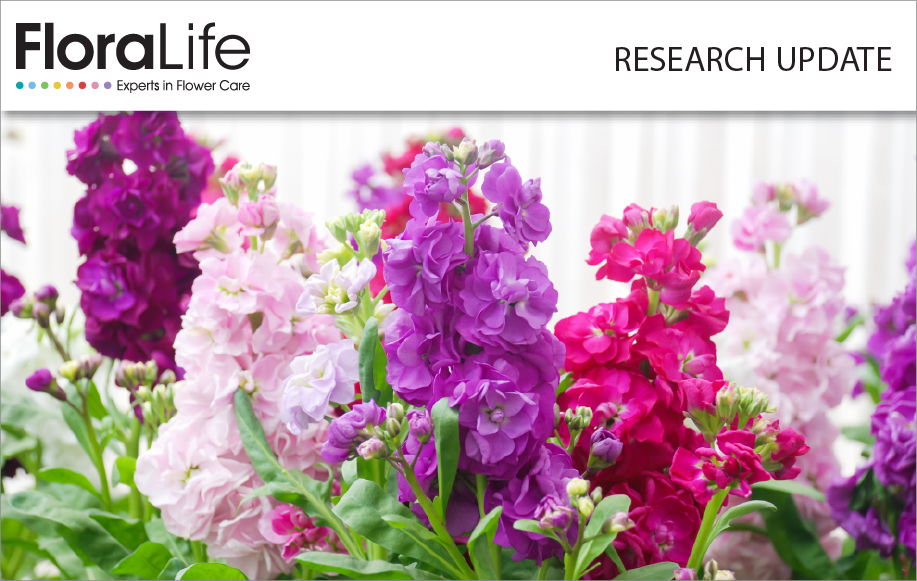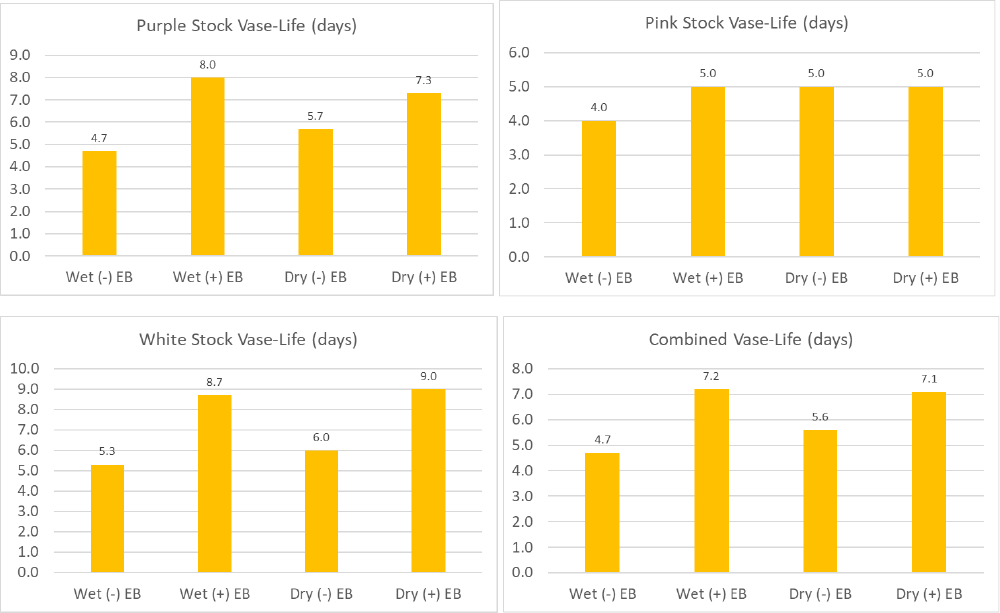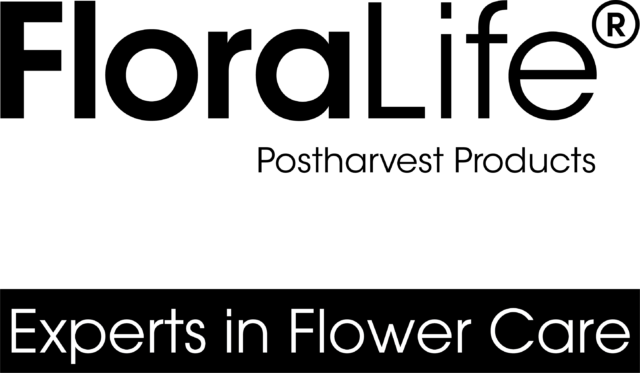Effect of shipping method and EthylBloc™ treatment on vase-life of Stock (Matthiola incana) following simulated wholesale storage and exposure to ethylene gas.
Research Update February 2024, powered by FloraLife
Garry Legnani, Ph.D. – Senior Postharvest Scientist – FloraLife

Introduction
Stock (Mathiola incana) is a popular cool season cut flower known for its fragrant showy flower spikes in a variety of colors. Stock is often harvested with a portion of its root system still attached and can be prone to wilting as well as challenging to hydrate. For this reason, some growers will ship these flowers in a transport solution. Stock is also ethylene sensitive.
We wanted to investigate the effects of wet versus dry shipping methods and with or without EthylBloc™ treatment on consumer vase-life following simulated wholesale storage and exposure to ethylene gas.
Methods
Three varieties of stock were harvested and placed into FloraLife® HydraFlor® by a California grower. Bunches were divided into the following shipping treatments:
- Procona (wet)
- Procona (wet) + EthylBloc™
- Box (dry)
- Box (dry) + EthylBloc™
Each shipping treatment included either a procona or a box. For wet shipping, stems were processed into proconas filled with FloraLife® 200 and capped with a cardboard sleeve. For dry shipping, stems were placed horizontally in a vented cardboard shipping box. Each procona held 4 bunches (40 stems) each of 3 different varieties for a total of 12 bunches (120 stems). Each box held 3 bunches (30 stems) each of 3 different varieties for a total of 9 bunches (90 stems). All boxes were stored overnight in the farm cooler at 2C (36F) until shipment.
EthylBloc™ (EB) Treatment
For wet shipment, two 2.5-gram EB sachets were attached to the cardboard sleeve – tops of procona sleeves were covered with a sheet of plastic and stored in the cooler overnight. For dry shipment, one 2.5-gram EB sachet was placed at each end of the shipping box and stored in the cooler overnight.
Shipping
The two proconas and 2 boxes were shipped via refrigerated truck to Canton Wholesale (North Canton, OH, USA). Flowers were then delivered to the Smithers-Oasis post-harvest testing lab (Kent, OH, USA) for evaluation.
Simulated Wholesale Holding Treatment
Upon arrival to the Smithers-Oasis post-harvest lab, stems from each treatment were divided into separate buckets containing FloraLife® 200 and were held in the flower cooler at 2-3C (36-37F) for 7 days.
Ethylene Exposure
Following simulated wholesale holding treatment, three stems of each variety from each treatment were processed into vases of FloraLife Crystal Clear®, placed into a plexiglass chamber and exposed to 2 ppm ethylene gas for 18 hours at room temperature at 21C (70F). Following ethylene exposure all vases were placed on a bench in the post-harvest lab for consumer vase-life evaluation at 21C (70F) with 12 hours fluorescent light.
Results

Conclusions
EthylBloc™ sachets applied prior to wet or dry shipping, followed by 7 days of simulated wholesale holding treatment, increased vase life in the purple and white stock varieties following 2 ppm ethylene exposure for 18 hours. No significant treatment effects were observed in the pink variety which showed poor vase-life in all treatments. Wet shipped flowers not treated with EthylBloc™ showed reduced vase-life compared to dry shipped flowers not treated with EthylBloc™ in this test, suggesting that dry shipped flowers may be more resistant to ethylene damage. Data indicates that EthylBloc™ treatment applied at the farm protected the flowers from ethylene damage after an extended wholesale storage period.
Photos: Consumer Vase-Life Day 4

Photos: Consumer Vase-Life Day 8

*Product availability depends upon geographical region. Check here for more information.
EthylBloc™ is a registered trademark of AgroFresh Inc.
